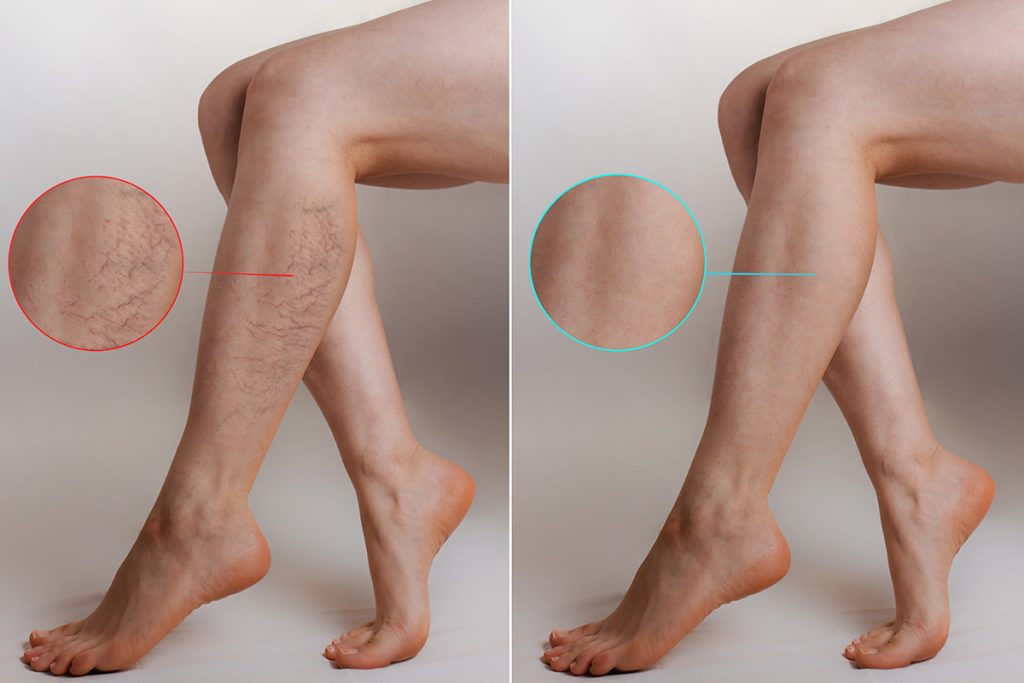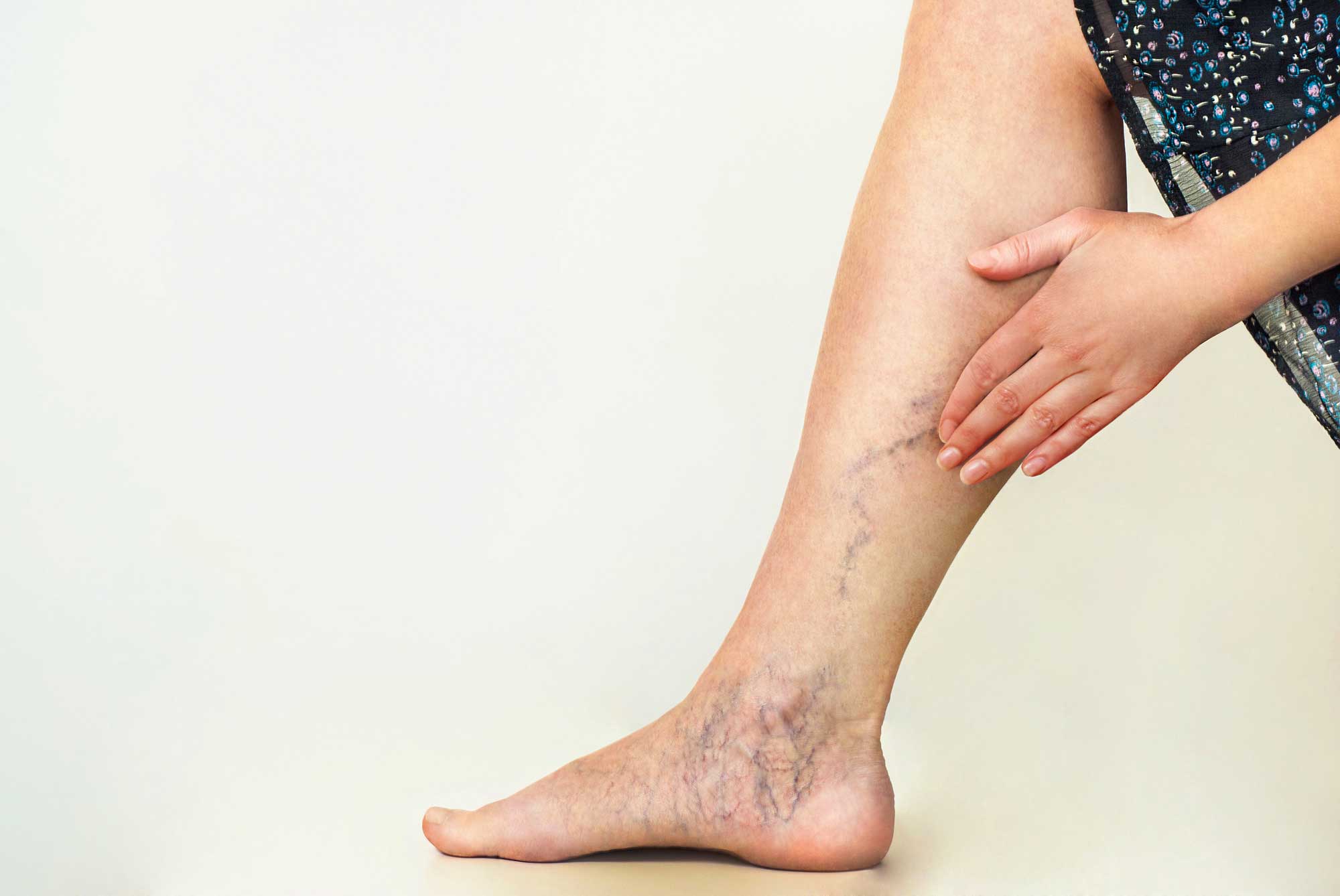DVT prevention after surgery is crucial, yet often overlooked. Ignoring it can lead to severe complications. Simple steps can make a huge difference in recovery.
Patients recovering from surgery are at high risk for deep vein thrombosis (DVT) and require thromboprophylaxis to prevent many blood clots. Preventative measures like compression stockings, medication, and physical activity play a vital role in venous thromboembolism and blood clotting, especially for the increased thrombosis risk elderly. These strategies help improve blood flow and reduce clot risks.
Understanding DVT prevention can save lives and enhance post-surgery recovery by preventing blood clot formation. Awareness and proactive measures are key. In the following sections, we’ll explore effective methods and practical tips to keep you safe from a blood clot.
Understanding DVT Prevention
Importance of Prevention
Preventing Deep Vein Thrombosis (DVT) is crucial. It helps avoid life-threatening complications like blood clot Pulmonary Embolism (PE). PE occurs when a blood clot travels to the lungs. This can block blood flow and cause severe damage or death.
DVT can form in the legs after surgery. Immobility increases this risk. Blood clots can then travel through the bloodstream. Proactive measures are necessary to stop this from happening.
Increased Post-Surgery Risk
Patients face a higher risk of DVT after surgery. Long periods of bed rest contribute to this. Surgery itself can also trigger clot formation due to tissue damage.
Certain surgeries carry more risk. Orthopedic surgeries, like hip or knee replacements, are examples. Blood clots are more likely in these cases.
Proactive Measures
Several measures help prevent DVT post-surgery:
-
Compression stockings: These improve blood flow in the legs.
-
Blood thinners: Medications like heparin reduce clotting risks.
-
Early mobilization: Encouraging movement soon after surgery aids circulation.
These steps minimize the chances of developing DVT. Patients should follow healthcare providers’ advice closely.
Role of Healthcare Providers
Healthcare providers play a key role in DVT prevention. They educate patients on risks and strategies. Clear communication ensures patients understand the importance of preventive measures for blood clot.
Providers also monitor patients post-surgery. They check for signs of DVT, such as leg swelling, pain, or a blood clot. Early detection allows for prompt treatment, reducing complications.
Strategies in Hospital
Anticoagulants
Anticoagulants are vital in preventing DVT after surgery. Doctors often prescribe them to stop blood clots from forming. These medicines work by thinning the blood, reducing the risk of clotting. Common anticoagulants include heparin and warfarin. They are usually given through injections or as pills.
Patients must follow their doctor’s instructions carefully. Incorrect use can lead to bleeding issues. Regular monitoring of blood levels ensures the medicine is working correctly.
Compression Stockings
Compression stockings are another effective method to prevent DVT. These special socks apply pressure to the legs, promoting blood flow back to the heart. This helps reduce swelling and prevents clots from forming.
Patients wear these stockings during and after surgery. The tightness of the stockings varies based on individual needs and blood clot prevention. Studies have shown that compression stockings significantly reduce the risk of blood clot DVT in post-surgery patients.
Early Ambulation
Early ambulation involves getting patients moving soon after surgery. Walking helps stimulate blood circulation, which is crucial in preventing clots. Healthcare providers encourage patients to take short walks as soon as they are able to prevent blood clot.
This practice not only helps prevent DVT and blood clot but also speeds up overall recovery. Patients who start moving early tend to have shorter hospital stays, fewer complications, and reduced risk of blood clot.
Sequential Compression Devices (SCD)
Sequential Compression Devices (SCD) are used in hospitals to prevent blood clot DVT. These devices wrap around the legs and inflate with air, mimicking the natural muscle contractions that occur during walking to prevent blood clot formation. This action promotes blood flow and reduces the risk of clot formation.
Hospitals use SCDs for patients who cannot walk immediately after surgery. They are particularly beneficial for those at high risk of developing DVT.
Intermittent Pneumatic Compression (IPC)
Intermittent Pneumatic Compression (IPC) devices function similarly to SCDs. They provide rhythmic compression to the legs, enhancing blood circulation and preventing clots. IPC devices are adjustable, allowing healthcare providers to set specific pressure levels based on patient needs.
These devices are used extensively in hospital settings, especially for bedridden patients or those recovering from major surgeries.
Tips for Home Care
Medication Adherence
Continue taking blood-thinner medication as prescribed. This helps prevent blood clots. Missing doses can increase the risk of DVT. Always follow your doctor’s instructions.
Compression Stockings
Wear compression stockings at home. These stockings help improve blood flow in your legs. Healthcare professionals will advise how long to wear them. They are essential for preventing DVT.
Regular Movement
Maintain an active lifestyle. Regular exercise improves circulation and prevents blood clots. Simple activities like walking can make a difference.
Bed Exercises
Perform exercises while in bed. Flex and extend your ankles several times a day. This keeps the blood moving in your legs.
Chair Activities
Do not sit for long periods in a chair. Stand up and move around every hour. This reduces the risk of developing DVT.
Travel Precautions
Take precautions when traveling. Long trips can increase the risk of DVT. Stand up, stretch, and walk around periodically during travel.
Recognizing Blood Clot Signs
Pain and Swelling
Pain is a common symptom of a blood clot. It may occur in the leg, arm, or other areas. The pain often feels like cramping or soreness. Swelling can accompany the pain. The affected area might become tender to touch.
Redness and Warmth
Redness on the skin can signal a blood clot. This redness usually appears in one area. The skin may also feel warm. These signs indicate inflammation due to clot formation.
Unusual Bleeding
Anticoagulants help prevent clots but can cause bleeding. Watch for unexpected bruising or bleeding. Nosebleeds and gum bleeding are also possible signs. Immediate contact with a healthcare provider is crucial if these occur.
Shortness of Breath
Shortness of breath might mean a blood clot has moved to the lungs. This condition is called pulmonary embolism (PE). PE is serious and needs urgent medical attention. Other symptoms include chest pain and rapid heartbeat.
Headaches and Vision Changes
Cerebral venous sinus thrombosis (CVST) affects veins in the brain. Severe headaches can be a sign of CVST. Vision changes, such as blurred vision, may also occur. Seek medical help if these symptoms appear.
Monitoring Symptoms
Regularly check for blood clot symptoms after surgery. Note any unusual pain, swelling, or redness. Monitor for signs of bleeding due to anticoagulant use. Early detection helps prevent complications.
Identifying Pulmonary Embolism Symptoms
Sudden Shortness of Breath
Sudden shortness of breath is a key symptom. This can happen without warning. It may feel like you can’t catch your breath. This occurs because the blood clot blocks the flow of blood to the lungs.
Chest Pain
Chest pain is another critical symptom. The pain might feel sharp and worsen with deep breaths. It can also mimic a heart attack. If you experience chest pain, seek medical help immediately.
Coughing Up Blood
Coughing up blood is a severe sign. It indicates that the clot has affected lung tissues. Blood may appear in small amounts or mixed with mucus. Immediate medical attention is necessary if this happens.
Respiratory Failure
Respiratory failure can occur in severe cases. This happens when the lungs cannot supply enough oxygen to the body. Symptoms include rapid breathing, confusion, and bluish skin color. Respiratory failure requires urgent treatment.
Thrombophilia
Thrombophilia increases the risk of blood clots. It’s a condition where blood tends to clot more easily. People with thrombophilia have a higher chance of developing DVT and pulmonary embolism.
Urgency of Medical Attention
If any symptoms are present, seek medical help right away. Delaying treatment can lead to serious complications or death. Doctors use imaging tests to diagnose pulmonary embolism quickly.
Link Between DVT and Pulmonary Embolism
Untreated Deep Vein Thrombosis (DVT) often leads to pulmonary embolism. Blood clots from DVT travel to the lungs, causing blockage. Preventing DVT is crucial for avoiding pulmonary embolism.
Exercise for DVT Prevention
Walking
Walking is essential after surgery. It helps stimulate blood flow. Aim to walk short distances several times a day. Gradually increase the distance as you recover.
Walking also strengthens leg muscles. This reduces the risk of deep vein thromboses (DVT). Make sure to wear comfortable shoes.
Leg Raises
Leg raises are simple and effective. Lie on your back. Lift one leg slowly, keeping it straight. Hold for a few seconds, then lower it.
Repeat with the other leg. Do this exercise a few times daily. It promotes circulation in the legs.
Ankle Pumps
Ankle pumps are easy to do. Sit or lie down comfortably. Point your toes downward, then upward.
Repeat this motion 10-15 times per session. Ankle pumps improve blood flow in the lower legs and help prevent venous thromboembolism.
Calf Stretches
Calf stretches are useful for preventing blood clots. Stand facing a wall. Place your hands on the wall for support.
Step one foot back and press the heel into the ground. Hold for 15-30 seconds, then switch legs. This stretch improves flexibility and circulation.
Compression Stockings
Compression stockings apply gentle pressure to the legs. They help prevent blood from pooling in the veins.
Wear them as directed by your doctor. They are especially useful if you have a history of vascular disease skin breakdown DVT or subclavian vein DVT prophylaxis needs.
Balancing Rest and Activity
Balancing rest and activity is crucial. Too much rest can lead to clot formation, while overexertion can cause injury.
Follow your doctor’s advice on how much activity is safe. Listen to your body and avoid pushing yourself too hard.
Gradual Increase in Activity
Gradually increasing physical activity is important for recovery. Start with light activities like walking around your home.
As you heal, incorporate more exercises like leg raises and calf stretches. Increase intensity only when you feel ready.
Mechanical Prevention Methods
Sequential Compression Device
Sequential Compression Devices (SCD) help prevent Deep Vein Thrombosis (DVT). They are sleeves worn on the legs. These sleeves inflate and deflate in a sequence. This action mimics the natural muscle contractions. It helps improve blood flow in the veins.
Using SCDs at home is beneficial. They reduce the risk of blood clots. Patients recovering from surgery can use them long-term. Proper use of these devices is crucial for effectiveness.
Intermittent Pneumatic Compression
Intermittent Pneumatic Compression (IPC) devices also prevent DVT. These devices apply pressure to the legs intermittently. The pressure helps push blood through the veins. This reduces the chance of clot formation.
IPC devices are easy to use at home. They come with adjustable settings for comfort. Regular use can significantly lower the risk of DVT after surgery.
Benefits of Mechanical Methods
Mechanical methods like SCD and IPC complement pharmacological strategies. They provide an additional layer of protection against DVT. Combining both methods increases effectiveness.
Pharmacological methods involve medication. These drugs thin the blood to prevent clots. However, they may have side effects. Mechanical methods do not have these risks.

Proper Use and Maintenance
Proper use and maintenance of these devices are essential. Always follow the manufacturer’s instructions. Ensure the sleeves fit correctly around the legs. Incorrect fitting can reduce effectiveness.
Regularly clean the devices to maintain hygiene. Check for any signs of wear or damage. Replace parts as needed to ensure optimal performance.
Using Anticoagulants
Types of Anticoagulants
There are different types of anticoagulants available. These medications help prevent blood clots from forming. Parenteral anticoagulants are injected directly into the bloodstream. They act quickly and are usually used in hospitals.
Oral anticoagulants come in pill form. They are often prescribed for long-term use after surgery. Examples include warfarin and direct oral anticoagulants (DOACs) like apixaban and rivaroxaban.
Role in DVT Prevention
Anticoagulant medications play a crucial role in preventing deep vein thrombosis (DVT). They work by thinning the blood, which reduces the risk of clots forming. This is especially important after surgery when patients are less active.
Pharmacological DVT prophylaxis involves using these medicines to prevent clots. It can be combined with mechanical methods for better results.
Adherence to Dosages
Following prescribed dosages and schedules is vital. Missing doses or taking too much can lead to serious complications. Patients must understand their medication regimen clearly.
Healthcare providers will give specific instructions on how and when to take these medicines. Adhering strictly to this guidance ensures the effectiveness of antithrombotic therapy.
Potential Side Effects
Anticoagulants can cause side effects. Bleeding is the most common issue. Minor bleeding might include nosebleeds or bruising easily. More severe cases could involve gastrointestinal bleeding or even brain hemorrhages.
Patients need regular monitoring to manage these risks. Blood tests help ensure that the medicine levels are safe and effective.
Interactions and Monitoring
Anticoagulants can interact with other drugs and foods. For example, warfarin’s effect can be influenced by vitamin K intake found in leafy greens. Patients should inform their doctors about all medications they are taking, including over-the-counter drugs and supplements.
Regular consultations with healthcare providers are essential. Adjustments to dosages may be needed based on test results and any side effects experienced.
Special Considerations
Certain conditions increase thrombosis risk, such as thrombophilia or additional thrombosis risk factors like obesity and smoking. Elderly patients also have an increased thrombosis risk due to age-related changes in blood flow and mobility.
People with bleeding disorders or contraindications should avoid certain anticoagulants. Thrombocytopenia, a condition with low platelet counts, can make bleeding more likely when on these medications.
When to Call Your Doctor
Specific Symptoms
Certain symptoms should prompt an immediate call to a healthcare provider. Swelling in one leg can be a sign. Pain or tenderness in the calf or thigh is another warning. Redness or warmth in the affected area should not be ignored.
Shortness of breath is serious. It may indicate a pulmonary embolism, which occurs when a blood clot travels to the lungs. Chest pain that worsens with deep breaths also requires urgent attention.
Regular Follow-Ups
Regular follow-ups are crucial after surgery. These appointments help assess DVT risk. Doctors can adjust medications if needed. Blood tests may be performed to monitor anticoagulant levels.
Patients should keep all scheduled appointments. Missing them can delay important adjustments in treatment. Communicating openly with healthcare providers helps ensure proper care.
Reporting Concerns
Patients should report any unusual symptoms during recovery. Bruising more easily than normal could indicate issues with anticoagulants. Persistent dizziness might signal a problem with blood pressure or medication side effects.
Leg cramps that do not go away could be a sign of DVT. Any sudden changes in health should be discussed with a doctor. Early detection and treatment are key to preventing complications.
Summary
DVT prevention after surgery is crucial for your health. By understanding DVT, using hospital strategies, and following home care tips, you reduce your risk. Recognize blood clot signs and pulmonary embolism symptoms. Exercise and mechanical methods help, as do anticoagulants. Always know when to call your doctor.
Take action now. Implement these strategies to safeguard your health. Stay vigilant and proactive in preventing DVT. Your well-being depends on it. Share this knowledge with loved ones, and let’s beat DVT together.
Frequently Asked Questions
What is DVT and why is it a concern after surgery?
DVT, or Deep Vein Thrombosis, is a blood clot in a deep vein. It’s a concern post-surgery due to prolonged immobility which increases clot risk.
How can hospitals help prevent DVT after surgery?
Hospitals use compression devices, anticoagulants, and encourage early mobilization to prevent DVT after surgery.
What are some home care tips for preventing DVT?
Stay active, wear compression stockings, stay hydrated, and follow your doctor’s advice on medications and exercises.
What signs should I look for to recognize a blood clot?
Look for swelling, pain, redness, or warmth in the leg. These could be signs of a blood clot.
What are the symptoms of a pulmonary embolism?
Symptoms include sudden shortness of breath, chest pain, rapid heart rate, and coughing up blood. Seek immediate medical help if these occur.
How does exercise help in preventing DVT?
Exercise improves blood circulation and reduces the risk of clots. Simple activities like walking can be beneficial.
When should I call my doctor regarding DVT concerns?
Call your doctor if you notice symptoms like swelling, pain in the leg, or any signs of a pulmonary embolism. Always err on the side of caution.





